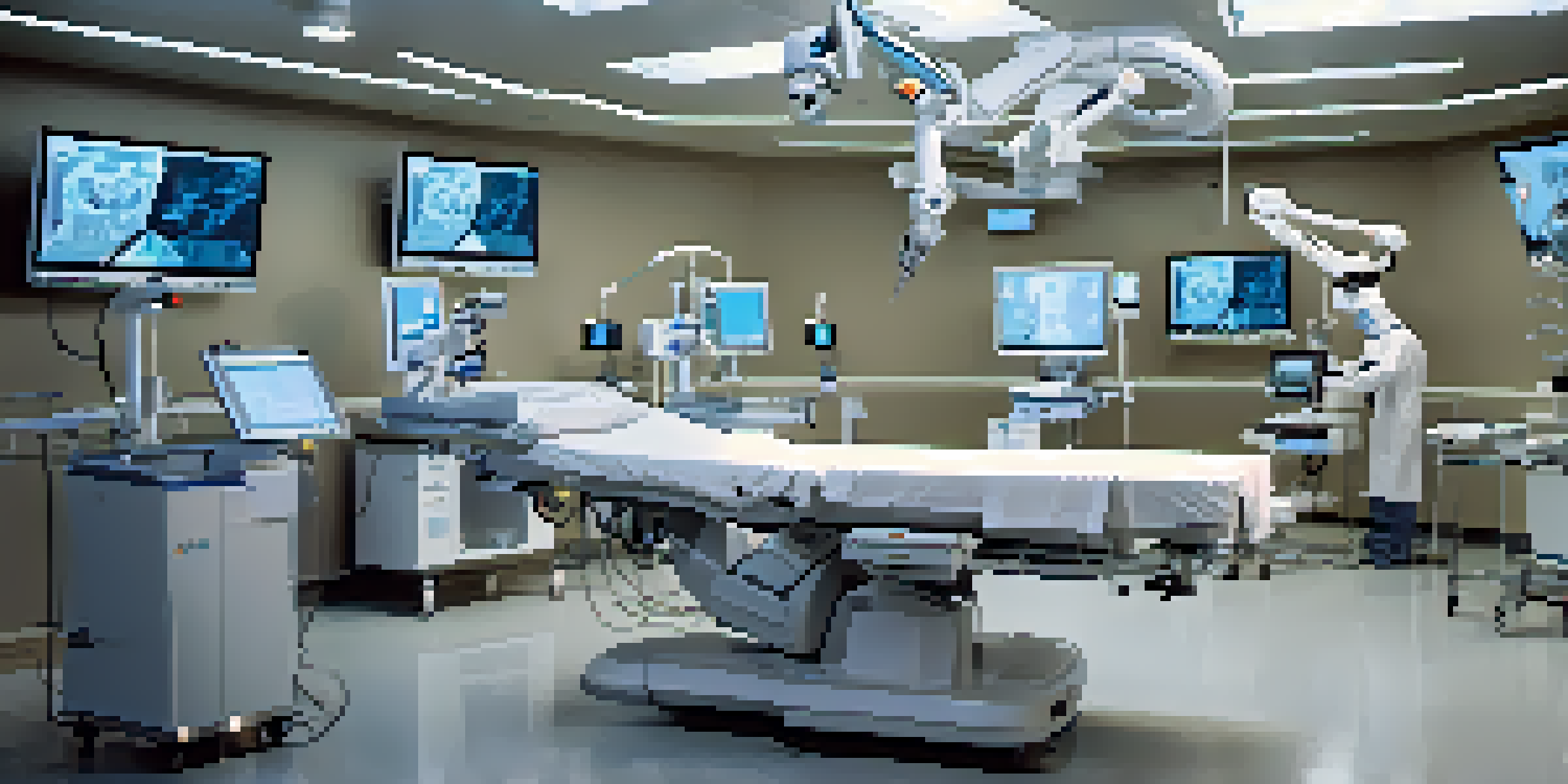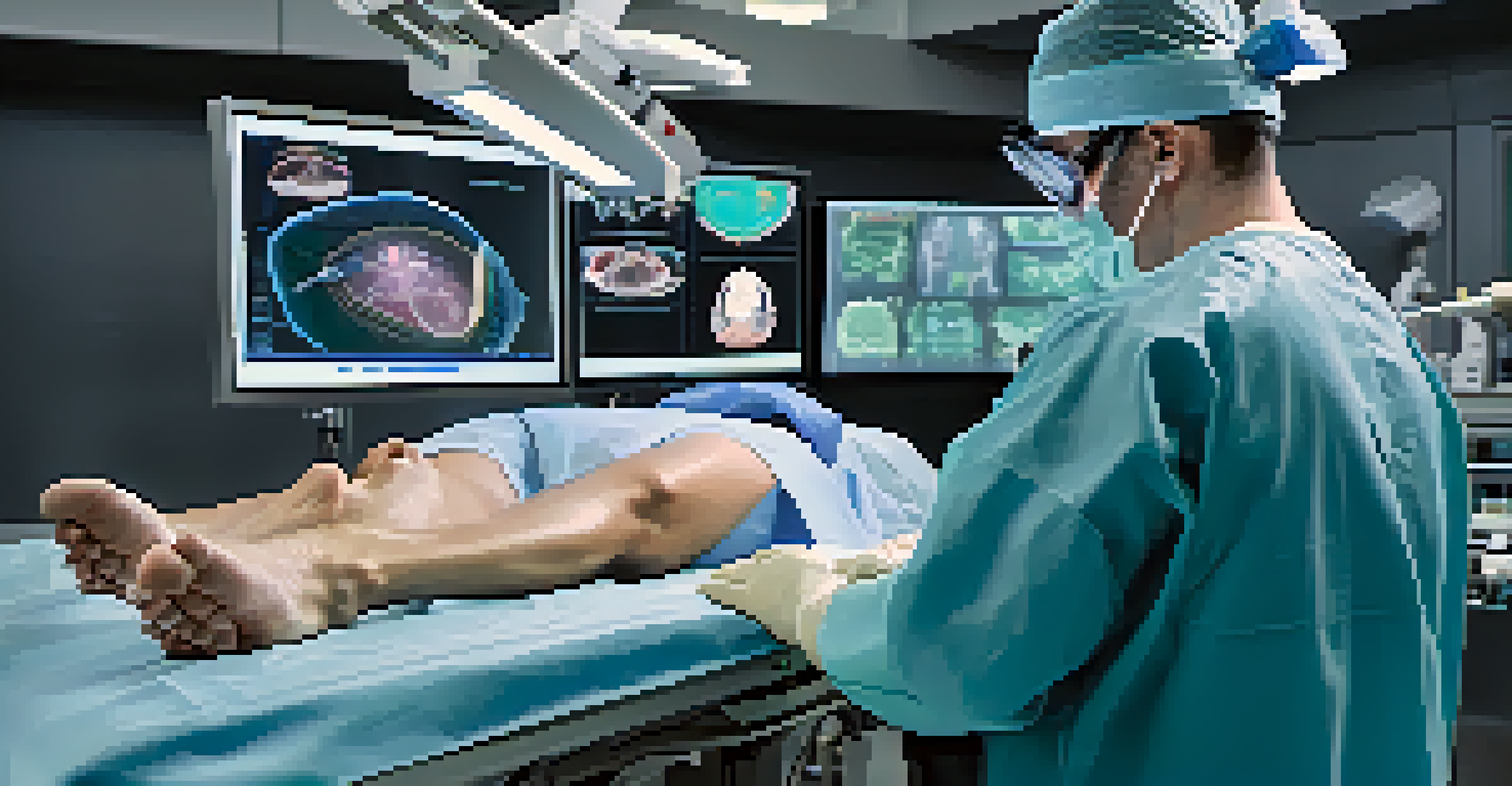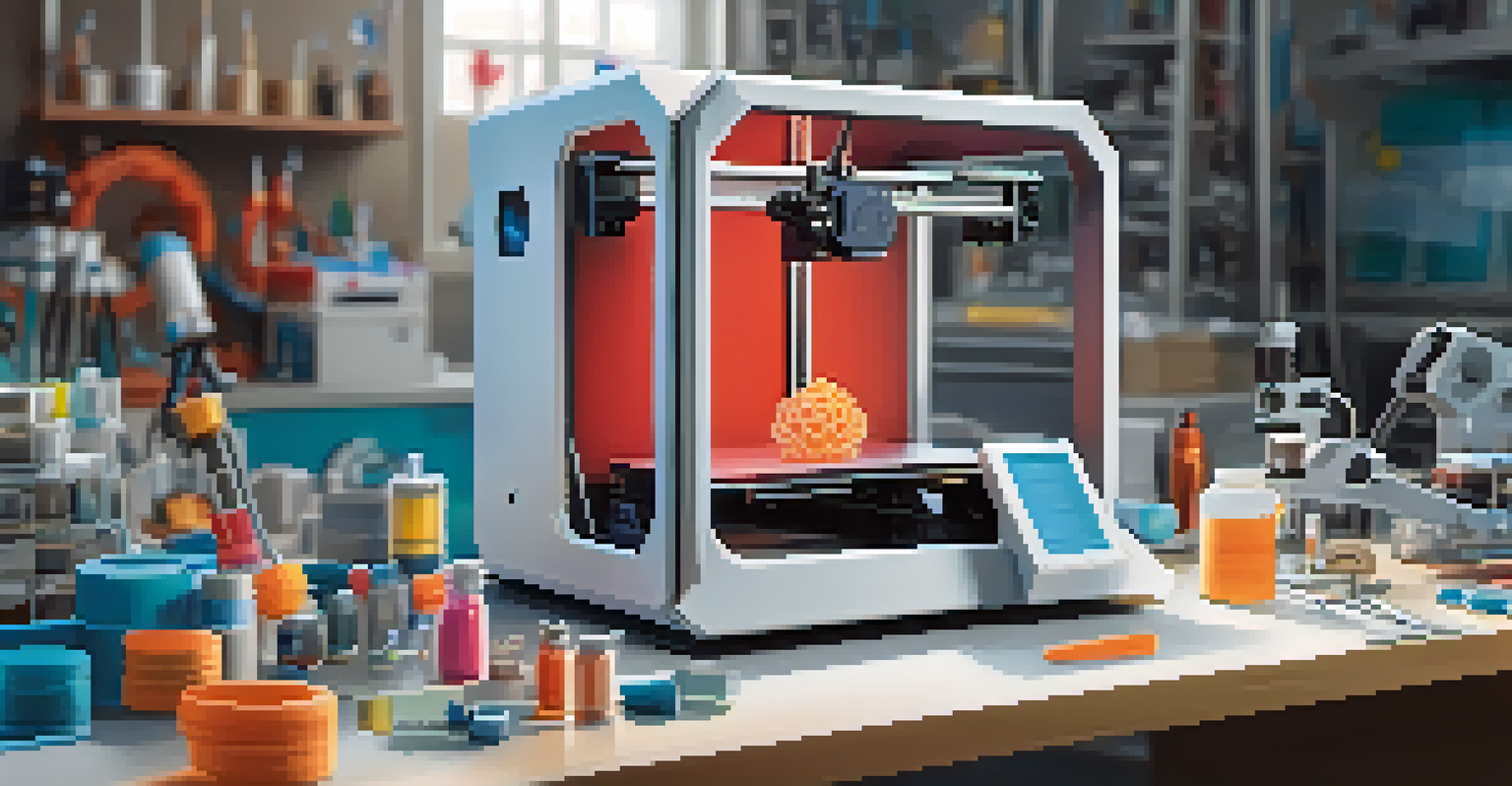Innovations in Surgical Techniques: A Modern Perspective

The Rise of Minimally Invasive Surgery Techniques
Minimally invasive surgery (MIS) has revolutionized the way we approach surgical procedures. By using smaller incisions, surgeons can reduce recovery time and minimize pain for patients. This technique often involves the use of specialized instruments and cameras, allowing for greater precision and visibility during operations.
Surgery is not just about the operation; it's about the whole experience of care that surrounds it.
One of the most notable examples of MIS is laparoscopic surgery, commonly used for gallbladder removal and hernia repairs. Instead of a large incision, surgeons can make several tiny cuts, leading to quicker healing times and less scarring. Patients can typically return to their daily activities within days rather than weeks, a remarkable shift in post-operative care.
The popularity of MIS continues to grow as more surgeons are trained in these techniques. With advancements in technology, such as robotic-assisted surgeries, the opportunities for minimally invasive approaches are expanding, promising a future where complex surgeries could become even less invasive.
Robotic Surgery: Precision at Its Best
Robotic surgery represents a significant leap forward in surgical innovation. This technology allows surgeons to perform delicate procedures with enhanced precision and control. Using a console, the surgeon manipulates robotic arms that execute the surgical tasks, often resulting in improved outcomes and reduced complications.

A prime example of robotic surgery is the da Vinci Surgical System, which has been widely adopted for procedures like prostatectomies and hysterectomies. The system provides a 3D view of the surgical area and allows for a range of motion that exceeds human capabilities. Surgeons find that their dexterity and accuracy are significantly improved, making complex surgeries safer.
Minimally Invasive Surgery Benefits
Minimally invasive surgery techniques significantly reduce recovery time and pain for patients, allowing for quicker returns to daily activities.
As robotic technology continues to evolve, we can expect to see its application broaden across various specialties. This approach not only enhances surgical performance but also fosters a more efficient surgical workflow, ultimately benefiting both patients and healthcare providers.
Augmented Reality in Surgical Planning and Execution
Augmented reality (AR) is making waves in the medical field, particularly in surgical planning and execution. By overlaying digital images onto the real world, surgeons can visualize complex anatomy in a more intuitive way. This technology enhances their understanding of the surgical site, improving the precision of their interventions.
The future of surgery is not about the machines or instruments; it's about how we can use them to enhance human capabilities and improve patient outcomes.
For instance, during a spinal surgery, AR can provide a 3D model of the spine, helping the surgeon pinpoint the exact location for intervention. This not only boosts confidence but also reduces the risk of errors. As a result, patients experience fewer complications and quicker recoveries.
The integration of AR into surgical practices is still in its infancy, but its potential is enormous. As more healthcare facilities adopt this technology, we can anticipate a future where surgeries are not only safer but also more efficient, leading to better patient outcomes.
3D Printing: Custom Solutions for Surgical Needs
3D printing is transforming many industries, and healthcare is no exception. Surgeons can now create custom implants and models tailored to the specific anatomy of a patient. This personalization enhances surgical precision and improves overall results, making each procedure uniquely suited to the patient's needs.
For example, 3D-printed models of organs allow surgeons to rehearse complex procedures before entering the operating room. This preparation can significantly reduce surgery time and improve accuracy during the actual operation. Additionally, custom implants made through 3D printing can fit better, leading to better integration and longevity.
Robotic Surgery Enhances Precision
Robotic surgery provides surgeons with enhanced precision and control, resulting in improved surgical outcomes and reduced complications.
As 3D printing technology continues to advance, we will see even more innovative applications in surgery. The ability to produce tailored solutions on-demand may redefine how we approach surgical interventions, emphasizing the importance of individualized care in modern medicine.
Telemedicine and Remote Surgical Consultations
Telemedicine has gained traction in recent years, and its impact on surgical care is profound. Surgeons can now conduct remote consultations, allowing them to assess patients without the need for in-person visits. This accessibility is especially beneficial for patients in rural or underserved areas, who may struggle to access specialized care.
During these consultations, surgeons can review medical histories, discuss symptoms, and even use digital tools to guide patients through pre-operative preparations. This approach not only saves time but also enhances patient engagement and understanding of their surgical journey.
As technology continues to evolve, we can expect telemedicine to play an even larger role in surgical practices. The ability to connect with experts from anywhere in the world may lead to a more collaborative approach to surgery, ultimately enhancing patient care.
Artificial Intelligence in Surgical Decision-Making
Artificial intelligence (AI) is quickly becoming an invaluable tool in the surgical landscape. By analyzing vast amounts of data, AI systems can assist surgeons in making informed decisions during procedures. This technology has the potential to enhance surgical outcomes by providing insights that might be overlooked in traditional practices.
For instance, AI algorithms can predict complications based on a patient's medical history and current health status. By identifying at-risk patients, surgeons can tailor their approaches, ensuring that interventions are as safe and effective as possible. This proactive strategy can significantly reduce the likelihood of post-operative complications.
Future of Surgery Emphasizes Innovation
The future of surgical techniques promises advancements in technology, focusing on personalized care and improved patient safety and outcomes.
As AI technology continues to advance, its integration into surgical practices will likely increase. This partnership between human expertise and machine intelligence could redefine surgical decision-making, pushing the boundaries of what is possible in the operating room.
Patient-Centric Approaches in Surgical Innovations
Modern surgical innovations are increasingly focused on patient-centric care. This approach emphasizes understanding the patient's needs, preferences, and overall well-being throughout the surgical process. By prioritizing patient experience, healthcare providers can foster better communication and trust, ultimately leading to improved outcomes.
For example, many hospitals are now incorporating pre-operative education programs that help patients prepare mentally and emotionally for surgery. These programs equip patients with knowledge about what to expect, reducing anxiety and enhancing recovery post-surgery. Patients who feel informed and supported are often more engaged in their care.

As the healthcare landscape evolves, prioritizing patient-centric strategies will be crucial. Innovations in surgical techniques that consider the patient experience will not only enhance satisfaction but also lead to better health outcomes, creating a more holistic approach to surgical care.
The Future of Surgical Techniques: What Lies Ahead
Looking ahead, the future of surgical techniques promises to be even more exciting. With ongoing advancements in technology, we can anticipate more innovations that will redefine how surgeries are performed. From enhanced imaging techniques to further developments in robotics, the possibilities seem endless.
As we embrace these changes, it is essential to keep patient safety and outcomes at the forefront of surgical evolution. Continuous education and training for healthcare professionals will play a vital role in ensuring that new techniques are implemented effectively. Collaboration among surgeons, engineers, and researchers will be key to driving these innovations forward.
Ultimately, the future of surgery will likely be characterized by a blend of advanced technology and personalized care. As we continue to push the boundaries of what's possible, patients can look forward to safer, more effective surgical interventions that cater to their individual needs.